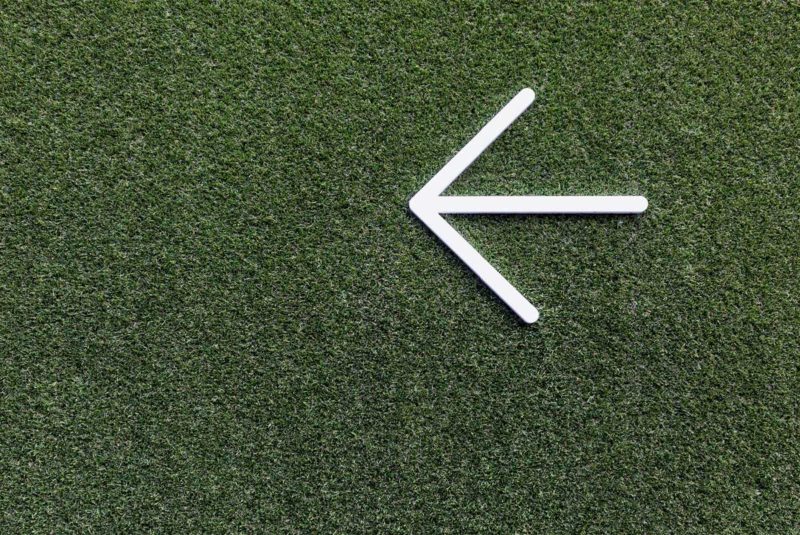College can be expensive, and with tuition and other costs continuing to rise, you may need to borrow money from a lender to help pay for your education.
You have many student loan options to choose from based on your situation. One of these options is a federal direct subsidized loan. So, what is this loan, how does it work and how does it compare to unsubsidized loans?
Our guide to direct subsidized loans can answer these questions, so you feel confident when it comes to choosing the best loan option for you.
Pros and Cons of Subsidized Loans
The Federal Direct Loan Program, backed by the U.S. Department of Education, provides low-interest student loans for undergraduate and graduate students and their legal guardians. They are separate from private student loans, which are provided by private companies.
These two kinds of federal student loans are called subsidized and unsubsidized loans.
When choosing a federal student loan, it’s important to consider the pros and cons in addition to the qualifications (we’ll get to those soon). This guide is focused on subsidized loans, so let’s take a look at some of the pros and cons for this loan specifically.
Pros of subsidized loans
- The government will pay your interest while you are in school (at least half-time), during your grace period and during a deferment period.
- These loans were created to help people in a more difficult financial situation pay for their undergraduate education.
Cons of subsidized loans
- Loans are given based on financial need.
- These loans are only available to undergraduate students.
- The amount you can borrow is limited based on what your school sets and the limits of the Federal Direct Loan Program.
What’s the Difference Between Subsidized and Unsubsidized Student Loans?
Now that you know a little bit about the pros and cons of a subsidized loan, let’s take a look at the differences between a subsidized loan and an unsubsidized loan to get a fuller picture of why you might want one loan over the other.
| Direct Subsidized Loans | Direct Unsubsidized Loans |
| Only available to undergraduate students that demonstrate a financial need. | Available to any student (undergraduate and graduate) regardless of their financial situation. |
| The government will pay your interest during school, during a 6-month grace period after you leave school and during a period of deferment (postponing the payments you make). | Interest, which you are fully responsible for paying, accrues from the moment you receive financial aid and during a deferment period. |
Qualifications
To qualify for a federal subsidized or unsubsidized loan you must[1]:
- Be a U.S. citizen or eligible non-citizen
- Demonstrate financial need (for a subsidized loan)
- Have a valid Social Security number
- Have a high school diploma or equivalent
- Fill out a Free Application for Federal Student Aid (FAFSA) form each year you want financial aid
- Be enrolled or accepted at least half-time at a school that participates in the Federal Direct Loan Program
- Maintain satisfactory academic progress
How Much Can You Borrow With a Subsidized Loan?
Your school sets limits on what types of loans you can apply for and how much you can receive in financial aid. And through the Federal Direct Loan Program, there are limits on how much you can borrow each year and in total (aka aggregate loan limit).
Each of these limits depends on what school year you are in, if you are a dependent (your parent(s) or guardian(s) can claim you on their taxes) or an independent student and what the government determines your financial need is.
If you reach the aggregate loan limit before you finish your schooling, you won’t be eligible to receive any more loans. However, if you start paying off some of your loans to bring your current aggregate loan balance below the total limit, you will be eligible to borrow again.
For example, a first-year undergraduate, dependent student can borrow up to $5,500 for that first year, but no more than $3,500 of that can be in subsidized loans. An independent student could borrow up to $9,500 with no more than $3,500 in subsidized loans.
The Federal Student Aid website can help you figure out your borrowing limits based on your situation.
How long can you borrow?
Keep in mind that if your first disbursement (loan payout) fell on or after July 1, 2013 and before July 1, 2021, then the maximum period of time you can receive subsidized loans is 150% times the length of the program you are enrolled in.[2]
For example, if you were enrolled in a 4-year program during that time period, the maximum period in which you could receive subsidized loans would be 6 years (150% x 4 years = 6 years).
But, if your first subsidized loan disbursement falls after July 1, 2021, there is no limit to the length of time you can receive a subsidized loan. And if you reached your 150% maximum period previously, your eligibility for applying for new loans after July 1, 2021, has been renewed.
What is the interest rate?
Interest is paid to your lender as a cost of borrowing money from them. It’s calculated as a percentage of the unpaid amount of your loan and accrues daily for both subsidized and unsubsidized loans.
For undergraduate borrowers, the interest rates for both subsidized and unsubsidized loans are the same and are usually lower than for private student loans. Loans that are disbursed on or after July 1, 2022, and before July 1, 2023, have an interest rate of 4.99% which is fixed for the life of the loan.[3]
How Do You Apply for a Subsidized Loan?
When you want to borrow money for school through a subsidized student loan, you must fill out a Free Application for Federal Student Aid (FAFSA) form online. It asks for information about your and your guardians’ income and assets to see if you qualify for a loan. You’ll have to fill out this form every year you want to apply for federal student aid.
Many states and colleges set priority application deadlines for submitting FAFSA forms that are separate from the federal deadline each year.
You can check the federal and state deadlines online. But be sure you also check with your school to see what their deadline is. Submitting your form before the earliest deadline helps you secure your best chance at receiving federal student loans.
Pro tip: make sure you know what your school’s definition of application deadline is, as it could be the date your FAFSA form is processed or the date your school receives your processed form.
How Are Subsidized Loans Disbursed?
When a borrower receives federal student aid money as a payment, it’s called a disbursement of funds. Students will usually receive their federal student aid in two or more disbursements.
If you are a first-time borrower, you’ll have to complete entrance counseling before receiving your first disbursement to make sure you understand your obligation to repay the loan. You’ll also sign a contract called a Master Promissory Note where you agree to the terms of the loan.
Your loans are disbursed directly through your school to your student account. They cover your tuition, room and board and other school fees. Once all of that is covered, any additional funds will be returned to you but you must use them to pay for school-related expenses.
Talk with your school’s financial aid office to see exactly how and when you’ll receive the funds and how they will be used.
Fees for subsidized loans
Although your FAFSA application is free, federal student loans have a small fee. This fee is based on a percentage of the total loan amount and is deducted from each disbursement of that loan.
For any loans disbursed on or after October 1, 2020 and before October 1, 2023, this fee is 1.057% of your total loan amount.[4]
When Do You Start Paying Off Your Subsidized Loans?
Deciding when to start paying off your federal subsidized loans will depend on your grace period, your financial situation and any other types of student loans you may have.
When you graduate, leave school or drop below half-time enrollment, your 6-month grace period will kick in. During this period you’ll be notified when your first payment is due.
Your financial situation may also determine your repayment plan and when you need to start making payments. Talk with your loan servicer to see what repayment option is best for you.
Since interest accrues from the moment an unsubsidized loan is disbursed, you may want to start paying those off first and then pay your subsidized loans after your grace period.
Grace period and deferment
Getting on your feet after your schooling can take time and you might not be ready to start making loan payments right away. Fortunately, subsidized student loans have relief options built into them that can be helpful, especially during financial hardship. We’ve listed a couple you should know about.
Grace period: A length of time after your payment due date when you can make a late payment, or no payment, without incurring any penalties.
Subsidized loans offer a 6-month grace period after you leave school when you can pay late or put off payments without being negatively impacted. This can be especially helpful if you are just starting a new job and don’t have a lot of money saved up to comfortably pay for all of your bills right away.
Deferment: A length of time in which you can postpone loan payments.
Subsidized loans offer deferment periods of various lengths depending on your provider and financial situation. During a deferment period of a subsidized loan, interest doesn’t accrue. So, you’ll owe the same amount when you start making payments again as when you stopped.
Direct loan repayment plans
Your repayment plan will depend on your individual needs. Consider your options by talking with your loan servicer before your 6-month grace period ends. That way you’ll be prepared for when your first payment is due.
All borrowers are eligible for a Standard Repayment Plan and you’ll usually end up paying less over time than with other repayment options. Payments are a fixed amount each month to ensure they’re paid off within 10 years.
The Income-Based Repayment Plan (IBR) is another popular option where payments are recalculated each year and based on your income and family size, but you must have a large amount of debt relative to your income to be eligible.
With the IBR option, your payments aren’t a fixed amount. This could increase the time it will take you to pay off the loan and the amount of interest you’ll end up paying compared to the Standard Repayment Plan.
If you need a little help figuring out how to pay off your student loans, we’ve got some helpful tips and FAQs, whether you’re still in school, in your grace period or in repayment.
Save on Interest With Subsidized Loans
Federal student loans can be subsidized or unsubsidized. Both loans must be paid back with interest, but one of the benefits of a subsidized loan is that the government will pay some of the interest.
Make sure to weigh all of your loan options and pick the one that meets your borrowing and repayment needs.
The Short Version
- One benefit of a subsidized loan is that the government will pay your interest while you are in school (at least half-time), during your grace period and during a deferment period
- For undergraduate borrowers, the interest rates for both subsidized and unsubsidized loans are the same and are usually lower than for private student loans
- Since interest accrues from the moment an unsubsidized loan is disbursed, you may want to start paying those off first and then pay your subsidized loans after your grace period
Federal Student Aid. “Eligibility Requirements.” Retrieved February 2022 from https://studentaid.gov/understand-aid/eligibility/requirements
Federal Student Aid. “Subsidized and Unsubsidized Loans: Is there a time limit on how long I can receive Direct Subsidized Loans?” Retrieved January 2023 from https://studentaid.gov/understand-aid/types/loans/subsidized-unsubsidized#is-there-a-time-limit-on-how-long-i-can-receive-direct-subsidized-loans
Federal Student Aid. “Subsidized and Unsubsidized Loans: What are the current interest rates?” Retrieved February 2022 from https://studentaid.gov/understand-aid/types/loans/subsidized-unsubsidized#what-are-the-current-interest-rates
Federal Student Aid. “Subsidized and Unsubsidized Loans: Loan fees for Direct Subsidized Loans and Direct Unsubsidized Loans.” Retrieved February 2022 from https://studentaid.gov/understand-aid/types/loans/subsidized-unsubsidized#loan-fees-for-direct-subsidized-loans-and-direct-unsubsidized-loans




